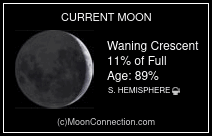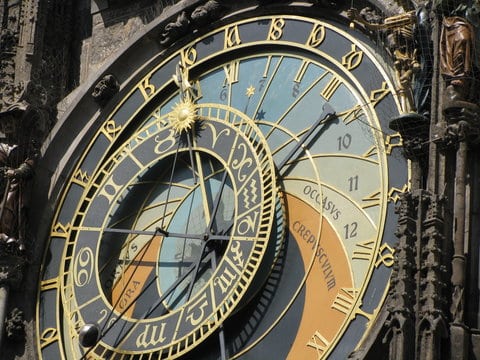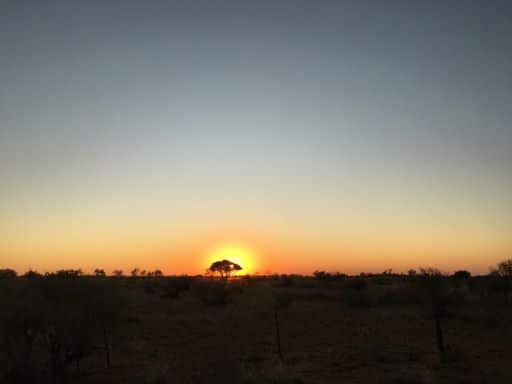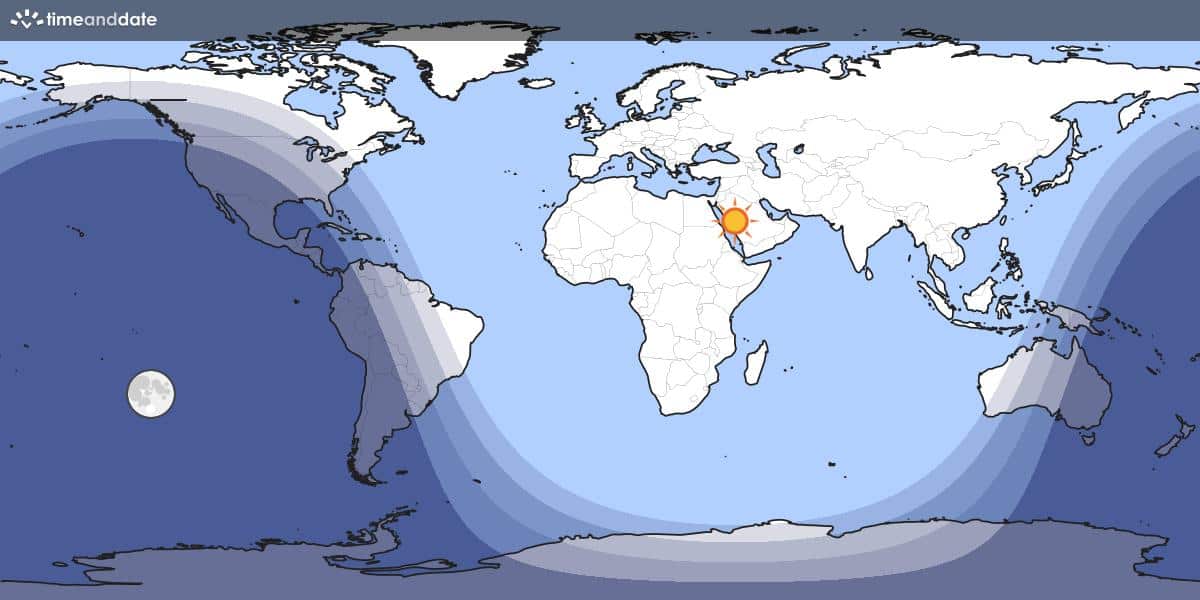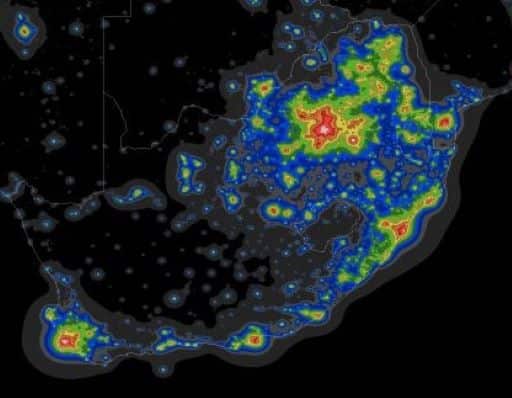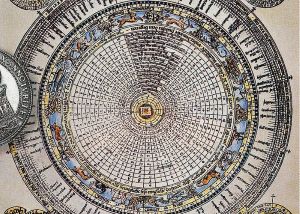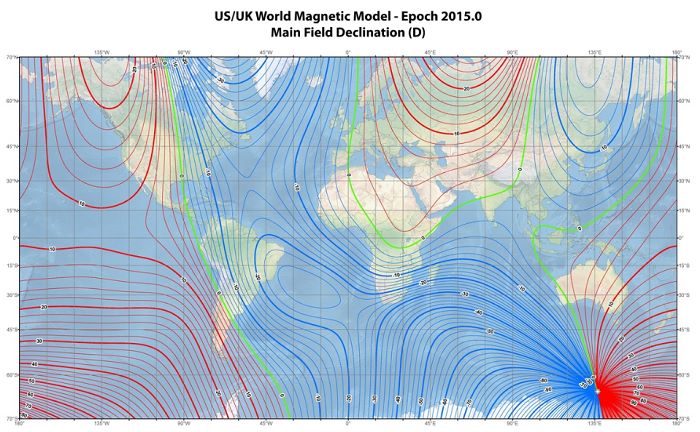Globular Clusters
The LMC contains a unique population of globular clusters at all stages of evolution
A night like no other…
A night amongst the Large Magellanic Cloud’s globular clusters is a night like no other. Where else, with a few nudges of your telescope, can you observe fifteen bona fide ancient globulars (12-13 billion years old), a multitude of young globular clusters that started forming a mere 3-4 billion years ago, two that formed during the vast ~6-7 billion “age gap” between the two bursts of cluster formation, a globular that was swiped from a smaller galaxy, the only known gravitationally bound binary globular cluster system, three coeval globulars, a gravitationally bound massive young globular cluster and small open cluster, and a “globular of the future”?
Fifteen Ancient Globular Clusters
The Cloud’s fifteen ancient globular clusters are, like our own Milky Way globular clusters, nearly as old as the universe, averaging around 12-13 billion years old. The Cloud’s oldest globular cluster is NGC 1466 which is 13.1 billion years old. It has a mass equivalent to roughly 140,000 Suns and it contains 49 known RR Lyrae variable stars, those indispensable tools for measuring distances in the Universe.
These mysterious and beautiful celestial fossils of the early universe evoke a sense of wonder at the sheer vastness and complexity of the universe because although the universe itself (and all the galaxies within it), has evolved over cosmic time, these ancient globular clusters have survived intact for well over 10 billion years, and in many cases over 13 billion years.

Beautiful NGC 1466, whose captivating dance of ancient stars has endured for over 13 billion years. Credit ESA, Hubble, NASA
Young Globular Clusters
Unlike the Milky Way, we can also observe 54 young globular clusters that started forming a mere 3-4 billion years ago. A number of them are extremely young (~30 million years old) and NGC 2004, is a mere fledgling at ~16 million years old! Interestingly, similar young globular clusters objects are found in M33.
The extreme youth of these LMC clusters was not realised until 1951 when Harlow Shapley and Virginia McKibben-Nail found a dozen Cepheid variable stars in NGC 1866, one of the largest of these clusters. This discovery was surprising because it implied that the cluster is relatively young. The young age was also consistent with the blue colour of the clusters. Paul Hodge later confirmed that most of the Magellanic “globulars” were indeed quite young. These very young, very luminous globular clusters are variously referred to as young globular clusters, young populous globular clusters, and blue globular clusters. For the purposes of this website I am sure I will be forgiven for choosing the reference “young” globular clusters!
According to astronomers Yuri Efremov and Bruce Elmegreen (1998), the young globulars in the Large Magellanic Cloud probably formed because the galaxy is interacting with the Small Magellanic Cloud. Every 100 million years or so the two Magellanic galaxies come close to each other, causing strong tidal forces to agitate the interstellar gas inside each galaxy. This increases the local pressure and causes the formation of young globular clusters. The distribution of the ages for the globulars is consistent with the estimated collision rate between the two galaxies.

Beautiful young NGC 1818 is a mere fledgling at 30 million years of age. Credit ESA, Hubble, NASA
Three “Age Gap” Globular Clusters
The globular cluster age distribution of the Large Magellanic Cloud exhibits a puzzling gap from ∼4 to 10 Gyr ago, with an almost total absence of globular clusters. Within this age gap, only three confirmed globulars have thus far been identified. Residing all the way over in Pictor, at a projected angular separation of ∼10° from the LMC centre, globular cluster ESO 121-03, with an age of approximately 9 billion years, was until 2022, the only known globular that formed during this vast ~6-7 billion “age gap” between the two bursts of cluster formation. However, in 2022 astronomer Andrés E. Piatti confirmed the existence of a second one – KMHK 1592 with an age of approximately 8 billion years – which is located in the LMC outer disc. Also in 2022, a thuird was confirmed – KMHK 1762 (Gatto et al. 2022).

One of only two members of the exclusive “Age Gap” club, remote ESO 121−03 lies in the far northern outskirts of the LMC. DSS image
Gravitationally Bound Binary Globular Cluster System
The Cloud also hosts the only known gravitationally bound binary globular cluster system – NGC 2136 and 2137. The cluster centres of gravity have an angular separation of only about 20 pc = 1.34 arcmin, both have similar ages, of about 100 ± 20 Myr, and identical metallicity, and their orbital period is about 46 Myr, which means they have orbited each other about twice within their lifetime (S. F. Portegies Zwart, S. P. Rusli 2006). The most likely fate of this system is to merge into a single structure.

It is a unique and striking sight to observe the only known gravitationally bound binary globular cluster system. NGC 2136 is the larger of the two, NGC 2137 the smaller. DSS image
Three Coeval Globular Clusters
There is a superb quartet of young globular clusters in a rich 16′ starfield in the southeast of the LMC of which three – NGC 2156, 2159 and 2172 – are coeval. Their age (65 million years) is consistent with their star formation being triggered by the expulsion of residual gas from the quartet’s fourth member, NGC 2164 (98 million years old).
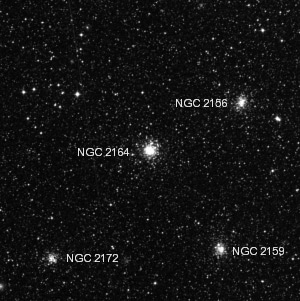
These four globular clusters are a superb sight, quite apart from their formation history. DSS image
An Unusual Double Cluster
NGC 1850 is an unusual double cluster that lies in the bar of the Large Magellanic Cloud. Not only is NGC 1850 the brightest star cluster in the Cloud, but it also has a tiny companion cluster, NGC 1850A, lying 30″ west of centre. Both are very young. NGC 1850 is ~50 million years old and NGC 1850A, composed of extremely hot, blue stars and fainter red T-Tauri stars, is a mere 4 million years old.
The spectacular filigree pattern of diffuse gas visible in the image was formed millions of years ago when massive stars in the main cluster exploded as supernovae. The nebula is part of the N103 superbubble and looks similar to the well-known supernova remnant, the Cygnus Loop, in our own Milky Way.
In 2021, a team of astronomers led by Sara Saracino of Liverpool John Moores University, U.K, reported the detection of a black hole in NGC 1850. Named NGC 1850 BH1, the black hole has a mass of 11 solar masses and is part of a binary system; its companion is a main-sequence turn-off star with a mass of 4.9 solar masses. It is a semi-detached system, with a short period of 5.04 days and orbital inclination at a level of 38 degrees.
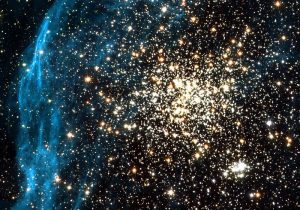
NGC 1850 and its small companion, lower right. Credit: ESA, NASA and Martino Romaniello (ESO)
The LMC’s Most Far-Flung Globular Clusters
Limited to our two dimensional view of the sky, it is impossible to envision the three dimensional reality of the Cloud. But one can try by demarcating naked eye where the galaxy’s three most far-flung globular clusters are projected on the sky. These three globular clusters are located so far from the centre of the LMC that they appear as isolated stellar systems in the southern sky.
Reticulum Globular, which resides in Reticulum as its name implies, lies at a projected angular separation of ~11° from the LMC’s centre.
ESO121 03, which resides in Pictor, lies at a projected angular separation of ∼10° from the LMC’s centre.
NGC 1841, residing in Mensa, lies at an astounding projected angular separation of 14.5° from the LMC’s centre. (Not only is it the LMC’s most far-flung globular cluster, but it also happens to be the southernmost globular cluster in our night sky.)

The LMC’s far-flung globular clusters. Image credit: Axel Mellinger, Central Michigan University/NASA Visualization Studio
Scrollable Table
Ancient Globular Clusters
Scrollable Table
"Age Gap" Globular Clusters
Scrollable Table
Location: LMC = Supergiant Shell. SB = Superbubble.



